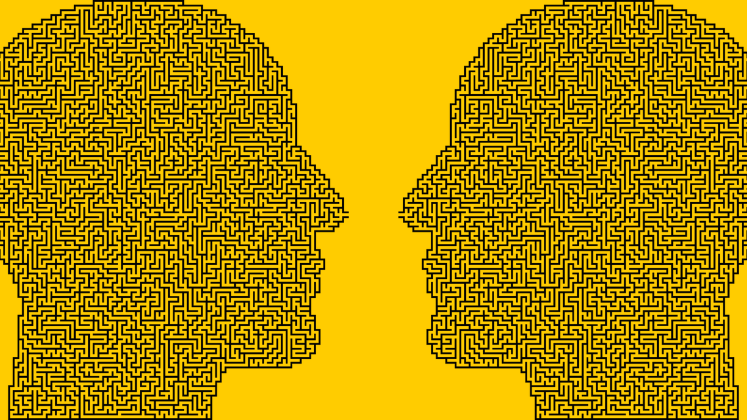In policy and legal systems, focusing too narrowly on one discipline can lead to questionable conclusions. Tsuyoshi Hondou and Ismael Rafols introduce ‘Concurrent evidence’, as a framework to consider evidence from multiple disciplines to reach more robust decisions.
Studies on transdisciplinary research (research that cuts across disciplinary and academic boundaries) often focus on how different forms of expertise are brought together to build robust knowledge. However, in policy and legal affairs, there are many situations in which it is not possible to create new knowledge in this way due to constraints, such as urgency, political expediency, or lack of resources. In practice, policy and legal decisions are often made in the face of contradictory evidence coming from different disciplines. As a result decisions can be taken without sufficient scrutiny from all relevant disciplinary sources.
policy and legal decisions are often made in the face of contradictory evidence coming from different disciplines.
Consider the following two cases:
Case 1: Likelihood of tsunamis hitting nuclear power plants in Fukushima: physics vs. geology
The first case concerns the advice on the locations of nuclear plants in Fukushima. Using as evidence about 100 years of seismograph measurements (i.e. ground movements), geophysicists showed that there was no evidence that a tsunami could hit the locations proposed for the nuclear plants. In contrast, from observations of tsunami deposits formed over thousands of years in the physical structure of the earth, geologists concluded that tsunamis could hit plants in those locations and that this might constitute a problem. The geological evidence was reported in 2010 to the government, before the earthquake in 2011. However, the Japanese government listened to the advice given by seismology (physics) rather than by geology, despite a longer observation record from the latter; with the well-known disastrous consequences.
Case 2: Infection route of COVID-19
The second case concerns advice on how to prevent COVID-19 infections. It was initially thought that COVID-19 infection was due to physical contact and droplets, and therefore appropriate prevention measures were thought to be disinfection and shielding. This advice was based on the common perception of medical doctors, who extrapolated from the dogma that airborne infection is restricted to tuberculosis, measles, and chickenpox. However, it was later shown by researchers with expertise in physics that masks and ventilation, vital to prevention against airborne infection, are much more effective than conventional prevention measures against infections.
even today, the Japanese government has not yet fully acknowledged the airborne nature of COVID-19.
Nevertheless, even today, the Japanese government has not yet fully acknowledged the airborne nature of COVID-19. As a result of this lack of attention to airborne infection, and also due to the resistance to challenge the old medical dogma, prevention measures against airborne infection have been insufficiently implemented in Japan. For example, ventilation systems that can easily accommodate heating and cooling are not widely installed in schools. Experts with knowledge of physics pointed out that the National Institute of Infectious Diseases wrongly classified the cases of airborne infection into contact or droplet until 2022, and sent an open question to the national institute, which was not specifically answered. In 2022, after this open question, the government finally acknowledged the key role of aerosol transmission. But, the government stated that airborne transmission is different from aerosol transmission. Meanwhile, the infection situation worsened: the annual number of deaths from COVID-19 in Japan in 2022 was 12 times higher than in 2020. In this case, advice from traditional voices within the medical sector took priority over advice based on perspectives more grounded in physics.
How to deal with expert evidence from different disciplines?
The advice assessment in cases such as those above could have been substantially improved with a policy process that was more open to multi- and interdisciplinary advice. Here, we review a method, Concurrent Evidence, that was initially developed in Australia and that has been adopted by courts in several countries.
A ‘structured discussion’ inspired by the ‘conferences’ in hospitals
The method of Concurrent Evidence was inspired by the ‘conference’ (meeting for discussion) held among medical doctors from different disciplines (e.g. surgeons, physicians, and radiologists) in order to find the best therapeutic approach, for example, a cancer treatment. In several court experiences, the method of Concurrent Evidence has demonstrated the importance of plural advice, which Andy Stirling has also emphasised in science policy.
Concurrent Evidence consists of two stages:
Stage 1: Joint Conference
In the first stage, called Joint Conference, the questions to be discussed among experts are provided by the court. The experts autonomously debate the answers to the questions and write a Joint Report (by themselves). The experts have to clarify on which points they agree and on which points they do not agree. For issues they do not agree on, they have to clarify on what and why they do not agree.
Stage 2: Hot Tubbing
In the second part, the experts are invited to the court simultaneously. They are usually seated together in the witness box; hence Hot tubbing. The judge chairs and both the judge and the lawyers ask questions to the experts based on the report of the Joint Conference. At this stage, discussions of disagreements across experts are encouraged. This process reveals the basis of the different opinions of the experts and allows the judge to quickly and easily determine what evidence is suitable for legal judgement.
Developing science policy methods of transdisciplinary evidence inspired by legal experiences
The structured discussion proposed for legal cases may under certain conditions be suitable for the use of evidence from multiple disciplines in policy. This raises a number of issues regarding the specific choices in implementation, such as who makes the questions to the experts and who chairs the discussion during the Hot tubbing. These issues can be best addressed in specific policy contexts. What concurrent evidence offers is a structured timely process whereby expert disagreements can be surfaced and judged.
As we have seen, undesirable decisions can be made due to a lack of attention in policy to the contrasting knowledge and answers provided by different disciplines. We have to recognise that policy making requires quick decisions under conditions of high uncertainty and with disparate advice from different sources. This may lead to non-optimal solutions. Processes that consider plural perspectives such as Concurrent Evidence can help in reaching better decisions.
A version of this post first appeared on the Leiden Madtrics blog as Concurrent Evidence: a framework for using evidence from multiple disciplines.
The content generated on this blog is for information purposes only. This Article gives the views and opinions of the authors and does not reflect the views and opinions of the Impact of Social Science blog (the blog), nor of the London School of Economics and Political Science. Please review our comments policy if you have any concerns on posting a comment below.
Image Credit: SIMON LEE via Unsplash.







